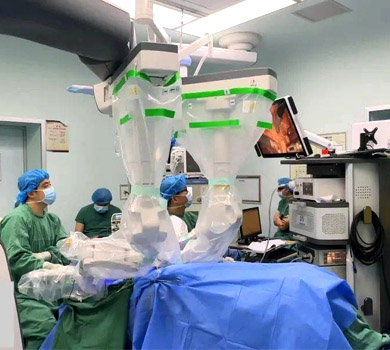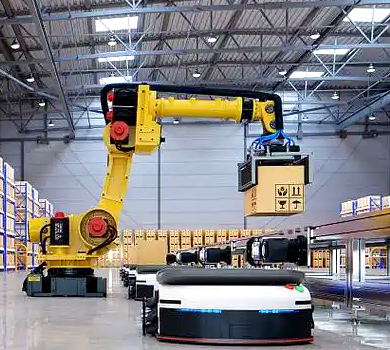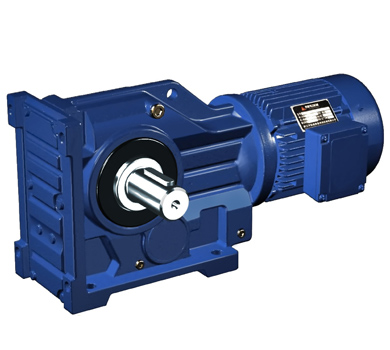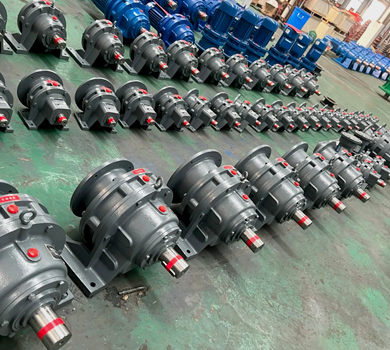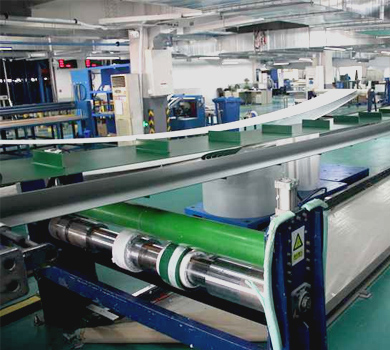Multi-station machining platforms are widely used in high-precision and high-efficiency production processes across industries such as automotive, aerospace, and electronics manufacturing. These systems typically include multiple machining units arranged in a rotating platform, enabling continuous processing with reduced manual intervention. With the trend of Industry 4.0 and increased demand for automation, these platforms are evolving to support higher throughput, faster cycle times, and improved reliability.
However, current systems face several challenges in their drive and transmission components. The following are the key issues:
- High requirements for torque density due to the need for large loads and high precision in rotation;
- Need for high system stability to ensure smooth switching and operation of multiple stations;
- Energy efficiency is crucial, especially in systems that operate continuously for long periods;
- Compact structural design is necessary to save space and improve integration flexibility;
- High-frequency maintenance is required for gearboxes due to wear and heat accumulation;
- High noise levels from traditional gearboxes, impacting working environments and equipment longevity;
- Compatibility with different motor types and drive configurations;
- Self-locking capability is essential for station positioning and safety in case of power failure.
The Role and Technical Requirements of Reducers in This Application
Reducers are critical components in multi-station machining platforms, as they directly influence the system’s accuracy, stability, and overall performance. The primary technical requirements include:
- High Torque Density: Must support high load torque for large-scale rotational movement;
- High Transmission Accuracy: Ensure precise positioning and smooth switching between stations;
- Fast Response Speed: Enable rapid synchronization for high-speed processing;
- High Self-locking Ability: Maintain station position without external locking mechanisms;
- Compact and Modular Design: Facilitate integration into complex multi-station systems;
- Low Noise Operation: Reduce acoustic disturbance in industrial settings;
- Environmental Adaptability: Function reliably in various temperature and contamination conditions;
- Long Service Life and Low Maintenance: Minimize downtime and reduce operational costs.
Waimica Worm Gear Reducer Solution
Waimica has developed a specialized worm gear reducer series tailored to the unique demands of multi-station machining platforms. This solution addresses all the challenges mentioned above and is engineered to meet the highest standards of performance and reliability.
Structural and Functional Design Highlights
- Compact and modular housing for space-efficient and flexible integration;
- Support for various mounting configurations to suit different application layouts;
- Optimized bearing design for high radial and axial load capacity;
- High-efficiency heat dissipation and low operating noise (less than 60 dB);
- Customizable input flanges compatible with standard and servo motor interfaces;
- Sealed construction with IP54/65 protection to ensure performance in harsh environments.
Performance Specifications
| Parameter | Waimica | Leading International Brand |
|---|---|---|
| Torque Range (Nm) | 1000-5000 | 1200-6000 |
| Transmission Accuracy (arcmin) | ≤1 | ≤1.5 |
| Efficiency (%) | 65-85 | 70-80 |
| Operating Temperature Range (°C) | -20 to +100 | -20 to +90 |
| Service Life (Hours) | ≥20,000 | ≥25,000 |
| Maintenance Cycle (Hours) | ≥10,000 | ≥8,000 |
| Noise Level (dB) | ≤60 | ≤65 |
Special Operating Condition Support
- High-temperature operation up to +100°C;
- Clean room compatibility with special sealing options;
- IP54/65 rating for dust and water resistance in industrial environments;
- Customizable surface coatings for corrosion resistance in chemical or coastal environments.
Typical Application Scenario and Customer Feedback
A leading automotive parts manufacturer requested a rotational switching system for a six-station assembly line, aiming to reduce cycle times and improve overall system reliability. The Waimica engineering team conducted a detailed analysis of the system’s load profiles, rotational speeds, and synchronization requirements. After a comprehensive selection process, a Waimica worm gear reducer was chosen for its high torque density, compact structure, and exceptional self-locking performance.
Following the integration of the Waimica reducer into the system, the customer reported the following improvements:
- 30% reduction in system downtime;
- 25% increase in cycle precision;
- 50% extension in maintenance intervals;
- 15% improvement in energy efficiency;
- Lower overall acoustic noise in the production area.
| Parameter | Before Waimica | After Waimica | Improvement (%) |
|---|---|---|---|
| Downtime (hours/year) | 500 | 350 | 30 |
| Cycle Precision (arcmin) | 1.2 | 0.9 | 25 |
| Maintenance Interval (hours) | 5000 | 7500 | 50 |
| Energy Consumption (kW/h) | 15.2 | 12.9 | 15 |
| Noise Level (dB) | 72 | 60 | 17 |
Conclusion and Waimica Brand Value
Waimica’s worm gear reducer solutions demonstrate a strong combination of performance, reliability, and cost-effectiveness, making them a compelling alternative to traditional international brands in the field of multi-station machining systems. Our reducers not only meet the rigorous technical demands of this application but also offer a longer service life, reduced maintenance needs, and a modular design that facilitates rapid integration into new or existing systems.
As the industrial automation market continues to grow, Waimica remains committed to delivering high-quality, customizable drive solutions that support our customers in achieving their operational goals. With a global footprint and a deep understanding of customer needs, Waimica is a trusted partner for the future of manufacturing automation.


